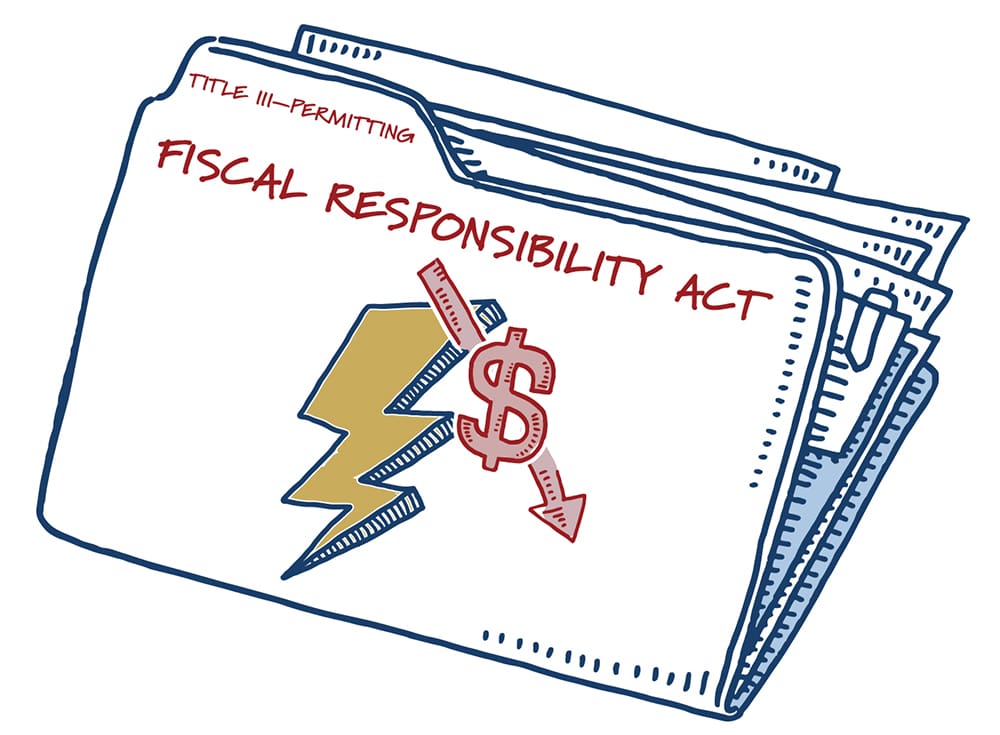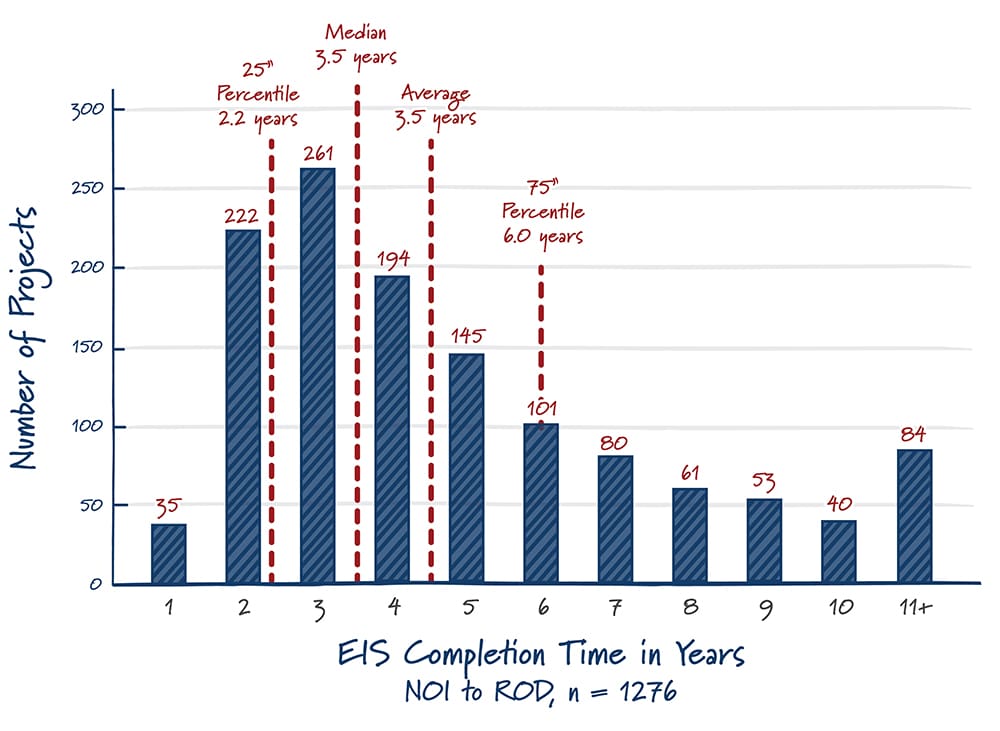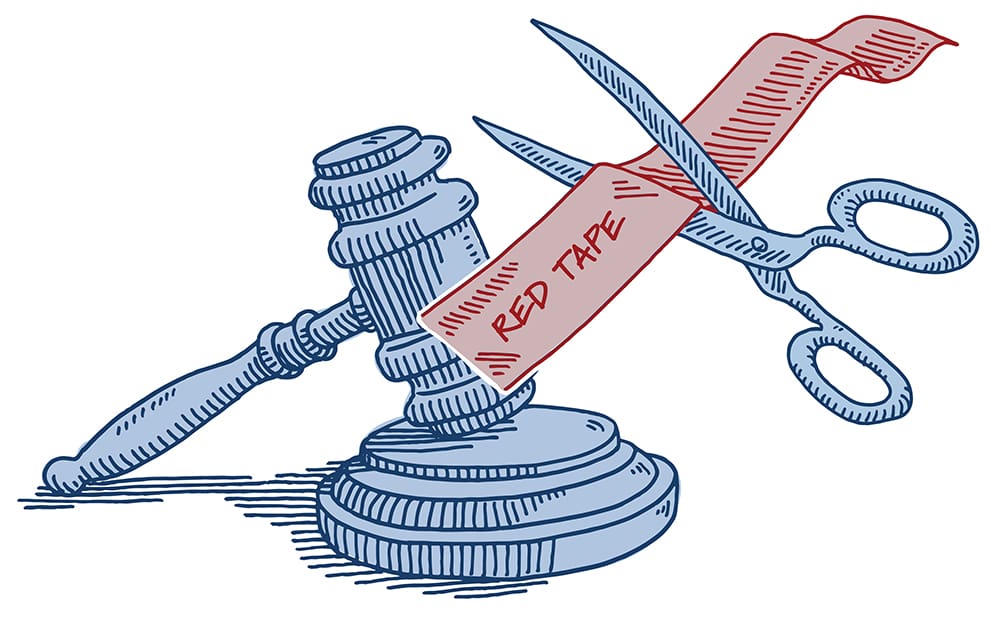Posted on September 6, 2023 by Matthew Mailloux
Some estimates say the U.S. will need to double the capacity of our grid by 2050 to meet demand. That means we’ll need to build an incredible amount of new energy projects — like 21,300 to 27,700 new clean energy projects by 2030 which is an average of 10 to 13 projects per day — to meet demand and emissions reduction goals. Some of those projects are ready to go, but currently stuck in permitting purgatory.
Instead of moving forward on breaking ground on clean energy projects, the Biden Administration may have just made it worse. The Council on Environmental Quality (CEQ) released new guidance for implementing the National Environmental Policy Act (NEPA) on July 28, 2023, and it falls dramatically short of the necessary reforms. The new NEPA guidance undermines recent bipartisan permitting reform efforts, increases uncertainty, and adds new requirements to permitting reviews that move us in the wrong direction.
Point-blank, the Administration is actively self-sabotaging its climate goals in this proposed rule. The U.S. needs to deploy more clean energy infrastructure projects, not fewer, at a faster pace and scale than the status quo. The proposed rule will make it more difficult to site and permit projects, increase interagency bureaucracy, and ultimately increase emissions through permitting delays.

Congress took action earlier this year to enact permitting reform changes, largely led by the efforts of House Republicans to put permitting reform front and center this Congress, passing H.R.1, the Lower Energy Costs Act, with bipartisan support. Many of the permitting provisions included in H.R.1 were ultimately included in the final debt ceiling deal codified by the Fiscal Responsibility Act.
With new energy projects expected to dramatically increase in the years ahead, these permitting delays are bound to get worse under the status quo. Clean energy projects face the same delay tactics and legal risks that can jeopardize financing.
While Congress attempted to avert this outcome in the Fiscal Responsibility Act, the Administration seeks to undermine those bipartisan efforts by describing these amendments as “largely codify[ing] long standing principles” related to reasonably foreseeable impacts and merely endorsing “current CEQ regulations and longstanding practice” for environmental reviews.
Rather than fully implement the newly enacted changes to NEPA, the proposed rule prioritizes the administration’s political agenda over getting clean energy infrastructure projects built. The Administration’s lack of follow through on congressional intent furthers the need for broader and bolder congressional action on permitting reform.
One of the most egregious changes in the draft CEQ Rule was completely replacing “impact” with “effect.” This would open up a slew of new litigation. The words seem similar, but let’s go back to grammar school for a second — an “effect” is a change or result. An effect can be positive or negative. “Impact” means something that comes about as the result of something coming forcibly into contact with something else. It has a much more disruptive and negative connotation.
Building a new road near your house might have a positive or negative effect on the traffic around you and your view. Whereas building that new road near your house might impact the trees, wildlife, noise or emissions. Changing this guidance to “effect” opens litigation opportunities for those who just don’t like the road.
ClearPath identified five additional missteps from CEQ’s NEPA guidance that actually make the Administration’s emissions reduction goals more difficult.
The proposed rule doubles down on a broken system by reverting to the 1978 regulations that created the current permitting morass and undermines new provisions enacted by the Fiscal Responsibility Act of 2023.
The 1978 regulations spiraled into a system that fundamentally does not work today. Reverting back to these outdated guidelines as the Biden Administration proposes would endorse a system where reviews last four and a half years on average for an Environmental Impact State (EIS) to reach a Record of Decision (ROD). Additionally, a full 10 percent of these project reviews took a decade or more. This is in stark contrast to the policy goals originally set out in 1978 which said reviews should normally be less than 300 pages and timelines should not exceed one year. Since then, federal reviews have spiraled into decade long efforts spanning thousands of pages.
Distribution of EIS Completion Time (NOI to ROD)
All EISs Completed 2010-2018

The proposed rule allows agencies to individually set additional requirements for NEPA reviews, eliminating consistency between agencies. These challenges empower cooperating agencies to offer competing standards for the same proposed project to meet. For example, the Fish and Wildlife Service could give the project a greenlight while the Bureau of Land Management could apply an entirely different standard and reach a different conclusion entirely. These inconsistencies have the potential to cause additional interagency disputes that can block a final decision on the project.
CEQ describes this proposal in the rule to say that “while agency procedures must be consistent with the CEQ regulations, agencies have discretion and flexibility to develop procedures beyond the CEQ regulatory requirements, enabling agencies to address their specific programs, statutory mandates, and the contexts in which they operate.” For a project developer seeking a permit, the lack of consistency between agencies will inevitably lead to competing standards and requirements.
The proposed rule removes the requirement that agencies conduct reviews based on the applicant’s goals and the agency’s statutory authority, which could eliminate some of the best clean energy projects.
The Trump Administration’s 2020 revision to the NEPA guidance ensured that environmental reviews used the proposed project as the starting point. This guaranteed that any alternatives cited during the review were consistent with the applicant’s goals and objectives. By removing this requirement, agencies will be able to consider wholly unrelated alternatives.

The proposed rule would allow agencies to comment on areas beyond their jurisdictional boundaries, removing the ability of a lead agency to control the aspects of the review.
Specifically, CEQ proposes to strike the requirement added by the 2020 revision that cooperating agencies limit their comments to matters within their jurisdiction as directed by the lead agency. This will lead to increased bureaucracy and interagency disagreements on the environmental impacts of the project.
In addition to the sneaky change from “impact’ to “effect,” the proposed rule adds new community engagement requirements without defining them, and fails to ensure that input is relevant to the project development permit. CEQ proposes to add new requirements related to “communities with environmental justice concerns” without defining them.
CEQ proposes that agencies “generally must include an environmental justice analysis to ensure that agency actions do not unintentionally impose disproportionate and adverse effects on these communities.” But goes on to say that “CEQ is not proposing to separately define the phrase “communities with environmental justice concerns,” but intends that phrase would mean communities that do not experience environmental justice as defined in § 1508.1(k).”
The lack of defined standards make compliance with these new requirements near impossible for agencies during the review process. It invites new legal challenges from both project developers and public interest groups over the presence, content, and factors included or omitted in these environmental reviews.
Unfortunately, none of these policy goals are oriented toward preclearing approvals for projects with limited environmental impacts, reducing litigation uncertainty after permits have been issued, or fundamentally getting more projects built without bureaucratic delay. Therefore, there is a clear need in these areas for additional Congressional action this year.
